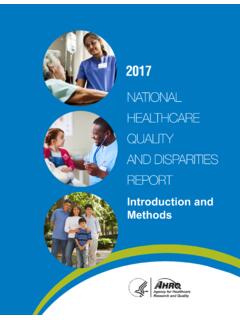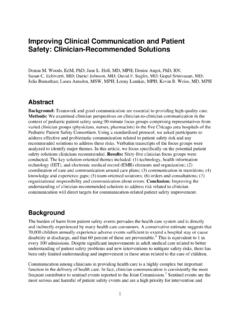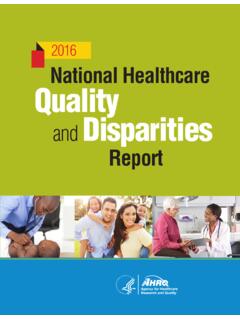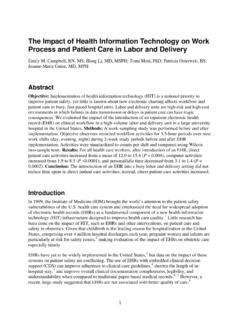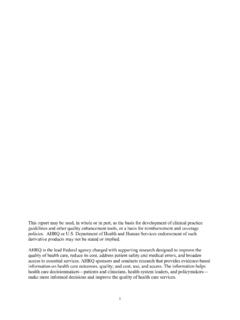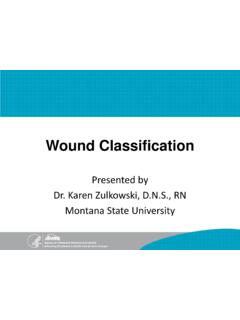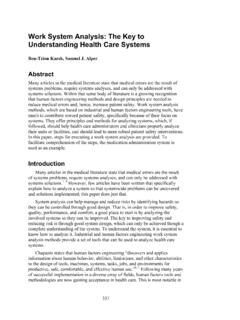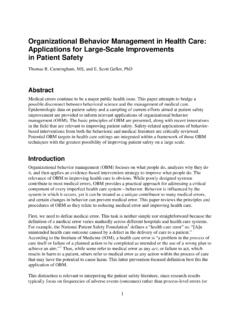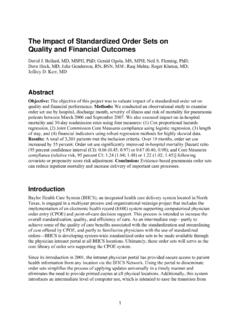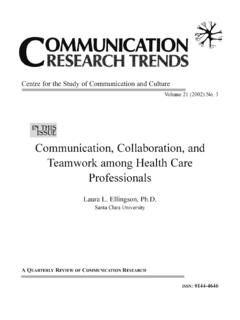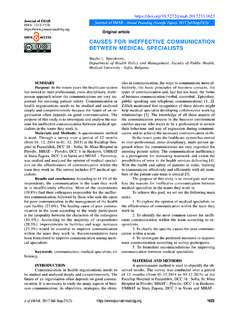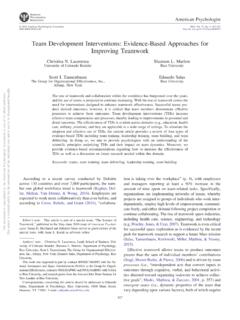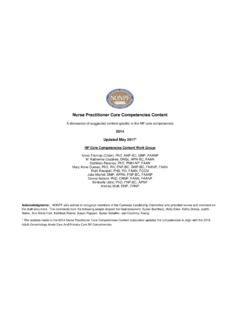Transcription of Improving Patient Safety Through Provider Communication ...
1 Improving Patient Safety Through Provider Communication Strategy Enhancements Catherine Dingley RN, PhD, FNP; Kay Daugherty RN, PhD; Mary K. Derieg RN, DNP; Rebecca Persing, RN, DNP Abstract The purpose of this study was to develop, implement, and evaluate a comprehensive Provider / team Communication strategy, resulting in a toolkit generalizable to other settings of care. The specific aims included implementation of a structured Communication tool; a standardized escalation process; daily multidisciplinary Patient -centered rounds using a daily goals sheet; and team huddles. The study setting was the 477-bed medical center of the Denver health and Hospital Authority, an integrated, urban Safety -net system.
2 Utilizing a pre-test/post-test design, baseline and post-intervention data were collected on pilot units (medical intensive care unit, acute care unit, and inpatient behavioral health units). Analysis of 495 Communication events after toolkit implementation revealed decreased time to treatment, increased nurse satisfaction with Communication , and higher rates of resolution of Patient issues post-intervention. The resultant toolkit provides health care organizations with the means to implement teamwork and Communication strategies in their own settings. Introduction Current research indicates that ineffective Communication among health care professionals is one of the leading causes of medical errors and Patient , 2, 3 A review of reports from the Joint Commission reveals that Communication failures were implicated at the root of over 70 percent of sentinel When asked to select contributing factors to Patient care errors, nurses cited Communication issues with physicians as one of the two most highly contributing factors, according to the National Council of State Boards of Nursing In a study of 2000 health care professionals.
3 The Institute for Safe Medication Practices (ISMP) found intimidation as a root cause of medication error; half the respondents reported feeling pressured into giving a medication, for which they had questioned the Safety but felt intimidated and unable to effectively communicate their The growing body of literature on Safety and error prevention reveals that ineffective or insufficient Communication among team members is a significant contributing factor to adverse events. In the acute care setting, Communication failures lead to increases in Patient harm, length of stay, and resource use, as well as more intense caregiver dissatisfaction and more rapid , 8, 9, 10, 11, 12 In multisite studies of intensive care units (ICUs), poor collaborativecommunication among nurses and physicians, among other specific factors, contributed to as much as a increase in Patient risk-adjusted mortality and length of stay.
4 13, 14, 15 1 Analysis of 421 Communication events in the operating room found Communication failures in approximately 30 percent of team exchanges; one-third of these jeopardized Patient Safety by increasing cognitive load, interrupting routine, and increasing tension in the OR The researchers found that Communication problems were relatively straightforward and fell into four categories: (1) communications that were too late to be effective, (2) failure to communicate with all the relevant individuals on the team, (3) content that was not consistently complete and accurate, and (4) communications whose purposes were not achieved , issues were left unresolved until the point of Examining the outcomes of Communication , other researchers have found associations between better nurse-physician Communication and collaboration and more positive Patient outcomes, , lower mortality, higher satisfaction, and lower readmission , 17, 18 Effective Communication among health care professionals is challenging due to a number of interrelated dynamics.
5 health care is complex and unpredictable, with professionals from a variety of disciplines involved in providing care at various times throughout the day, often dispersed over several locations, creating spatial gaps with limited opportunities for regular synchronous Care providers often have their own disciplinary view of what the Patient needs, with each Provider prioritizing the activities in which he or she acts health care facilities have historically had a hierarchical organizational structure, with significant power distances between physicians and other health care professionals. This frequently leads to a culture of inhibition and restraint in Communication , rather than a sense of open, safe Communication (psychological Safety ).
6 Differences in education and training among professions often result in different Communication styles and methods that further complicate the scenario and render communications ineffective. Although teamwork and effective Communication are crucial for safe Patient care, the educational curricula for most health care professions focus primarily on individual technical skills, neglecting teamwork and Communication skills. A cultural barrier can be found in many organizations that can be traced to the belief that quality of care and error-free performance result from professional training and effort, ignoring the inherent limitations described in human factors In fact, human factors such as cognitive overload; the effects of stress, fatigue, distractions and interruptions; poor interpersonal communications; imperfect information processing.
7 And flawed decisionmaking are all known to contribute to errors in health care and other complex environments, such as , 6 Failure to recognize and understand these issues can lead to a culture of unrealistic expectations and blame, diverting efforts away from effective team-based error management strategies. Intervention-focused research that seeks to improve collaborative Communication is As a means of Improving Patient Safety and outcomes, interventions should focus on integrating the critical attributes of collaboration , including open Communication , shared responsibilities for planning and problemsolving, shared decisionmaking, and , 20 Additionally, 2translating the theories and practices of teamwork and Communication from aviation to health care is gaining support from a number of researchers citing common elements in both industries.
8 Training efforts such as crew resource management (CRM) and a focus on the key concepts of leadership, briefings, monitoring, cross-checking, decisionmaking, and review and modification of plans have enhanced Communication and teamwork, thus providing a mechanism for increased Safety and a change in crew attitudes and Drawing on current research, the purpose of this study was to develop, implement, and evaluate a comprehensive team Communication strategy, resulting in a toolkit that can be generalized to other settings of care. The specific aims included: 1. Implementation of a standardized Communication tool, the SBAR (see description on next page), as a guide for communicating changes in Patient status.
9 2. Implementation of an escalation process tool to facilitate timely Communication . 3. Daily multidisciplinary Patient -centered rounds using a daily goals sheet. 4. Team huddles during each shift. Methods Utilizing a pre-test/post-test design, this study incorporated baseline data collection and implementation of team Communication interventions, followed by data collection and analysis over a 24-month period. The goal of developing a user-friendly toolkit was accomplished as feedback and findings from this study were revised and adapted. Study Setting Denver health Medical Center, an urban public Safety -net hospital, provided the site for this study, with specific focus on three care settings utilized for pilot testing.
10 These settings were selected because they each provided a different type of unit organization and staff. Phase 1 focused on two settings: the Medical Intensive Care Unit (MICU) and the Acute Care Unit (ACU). The ACU was selected because it had a very diverse Patient population, with multiple physician teams and services assigned to the unit at a given time. The MICU was selected because it was a closed unit with fewer physician teams and one primary service with more accessibility to physician consultation. Phase 2 focused on behavioral health units: an Adult Psychiatric Unit, an Adolescent Psychiatric Unit, and an Acute Crisis Service (psych ED).
